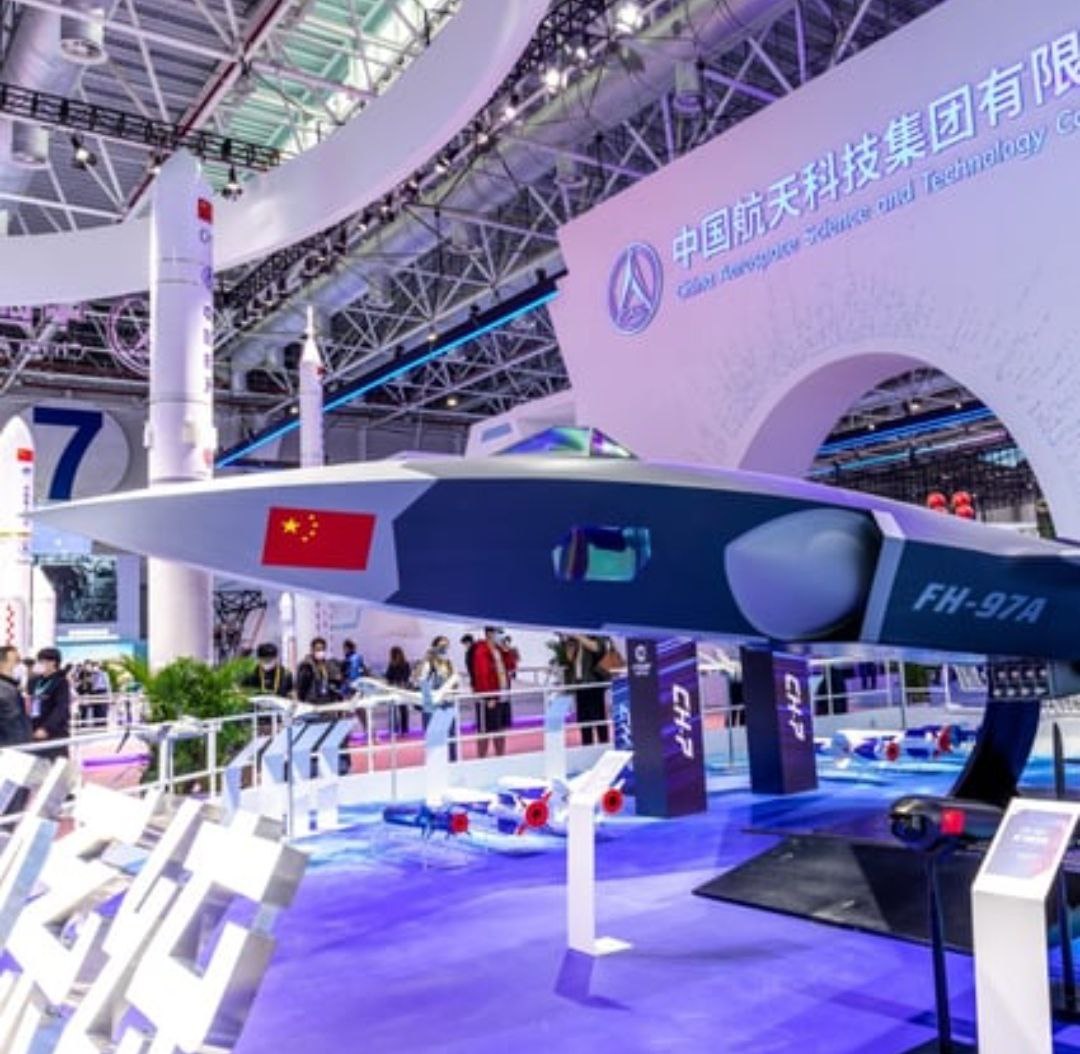China is working on a new advanced combat drone to operate as a ‘loyal wingman’ alongside the J-20 Mighty Dragon, its most advanced stealth fighter jet. This drone could potentially even match the speed of the J-20 aircraft.
A prototype of this Unmanned Combat Aerial Vehicle (UCAV), called the Feihong FH-97A, was unveiled at the biennial Zhuhai air show in southern China in November 2022, which was followed by reports in Chinese military magazines suggesting it could become another ‘loyal wingman’ for the J-20.
“The pairing of the FH-97A and the J-20 will free up the J-20 from frontline combat tasks so that it can specialize in functions such as command and control, data distribution and interruption of communication,” a report in the latest edition of Naval and Merchant Ships magazine said.
According to this report, distributing certain tasks to a loyal wingman like the FH-97A would improve the survival rate of pilots and manned fighter jets during a conflict.
In fact, in October 2022, Chinese state-owned broadcaster CCTV-7 aired a video about manned-unmanned teaming, which featured a twin-seat J-20B stealth fighter flying together with what appeared to be four Hongdu GJ-11 Sharp Sword Unmanned Combat Aerial Vehicles (UCAVs).
Un passage dans un reportage de CCTV-7 montre la possible collaboration entre un J-20 biplace et des #drones GJ-11 à faible observabilité.
La représentativité est à confirmer. pic.twitter.com/9Xy8Q8KQOO
— East Pendulum (@HenriKenhmann) October 12, 2022
The video suggested a potential role of a drone controller for the J-20B aircraft. The addition of the tandem seat makes the jet better suited to perform this task and the extra workload associated with it.
FH-97A Unmanned Combat Aerial Vehicle
The FH-97A is being developed by the Aerospace Times Feihong Technology Corporation (ATFTC). It has a very similar fuselage design to the J-20, which suggests this UCAV flying just as fast as the Mighty Dragon, as per a report in December 2022 by the Ordnance Industry Science Technology, a Chinese military magazine.
Reports suggest that the FH-97A has been designed to counter large and medium-sized drones and manned fighter jets, including early warning aircraft, strategic bombers, and electronic warfare aircraft.
The FH-97A can reportedly carry eight smaller, intelligent air-to-air missiles or loitering munitions, which according to reports, could make up for the J-20’s lack of ammunition, considering that the Mighty Dragon can carry only four medium- to long-range air-to-air missiles in its main bay and one short-range missile in each lateral weapon bay.

Some western reports also describe the FH-97A as a clone of the XQ-58A Valkyrie being developed by the American manufacturer Kratos for the US Air Force (USAF) as part of the Loyal Wingman concept.
Like the Valkyrie, the Chinese-made FH-97 has a stealthy trapezoidal fuselage, sharply swept main wings, a V-shaped tail, and an air intake above the fuselage.

The FH-97 is designed to conduct rapid long-distance reconnaissance, surveillance, and strike missions targeting critical enemy locations and facilities.
“UAVs will be put into a complex battlefield environment in a future war. In the face of enhanced missile systems that contain airborne early warning aircraft, stealth fighter jets, and electronic warfare aircraft, high-speed drones can largely increase battlefield survivability and penetration capability,” according to an official from the ATFTC.
As stated earlier, the FH-97 can carry loitering munitions, which include the FH-901 loitering munition that can be employed to conduct rapid and precise attacks on enemy maneuvering and sensitive targets.
Reports suggest the FH-901 is also influenced by the US-made Switchblade drones used by the Ukrainian armed forces for pinpoint strikes against Russian military personnel in the ongoing Russia-Ukraine war.
Beijing-based military analyst Zhou Chenming differs from the western media reports describing the FH-97 as a clone of the Valkyrie, saying these two are “different designs with their own merits.”
“The Valkyrie is a subsonic drone, while the FH-97A is a super-speed variant,” he said.
FH-95 Electronic Warfare Drone
Apart from the FH-97, ATFTC is also working on an electronic warfare and armed reconnaissance drone belonging to the family of the FH-95 UAV system.
Not much is known about the operational characteristics of this drone, except that it is a medium-and-long range multi-purpose platform with a one-ton take-off weight and an endurance of more than 24 hours. It can carry more than 250 kilograms of various mission payloads.
According to Janes, the UAV has four weapon hardpoints, and among the weapons it can carry includes the 44-kilogram FT-8C laser-guided missile. Also, it could very likely have the ability to fire anti-radiation missiles.

The FH-95 drone completed its first test flight in 2017, was delivered to a major client in 2019, and received its first export contract in 2021, according to a Beijing-based magazine, ‘Unmanned Vehicles’ cited by Global Times.
Also, a new variant of the FH-95 is reportedly being flight-tested in a facility in Northwest China.
What is most important, though, is that the FH-97 and the FH-95 could complement each other in live combat situations. The FH-95 could provide electromagnetic interference ahead of the suppression of enemy air defense (SEAD) strikes by the FH-97, according to China’s state-owned media outlet, Global Times.
It could be another way around, too, meaning the FH-97 can be used as decoys to bait the enemy air defenses into revealing their positions, following which the FH-95 can go in and take out the air defense radars using its anti-radiation missiles, thereby making it safer for manned fighter jets to operate.
Overall, naval experts in Beijing, like Li Jie, note that using unmanned aerial vehicles in the war in Ukraine has inspired China’s People’s Liberation Army (PLA) to put more resources into hybrid warfare, including integrating manned and unmanned weapon systems.
“Drone warfare could help the PLA to deter US aircraft from conducting close-in reconnaissance along China’s southeastern coast if it can develop more of these ‘loyal wingman’ drones and get them into service,” Li said.
- Contact the author at tanmaykadam700@gmail.com
- Follow EurAsian Times on Google News




